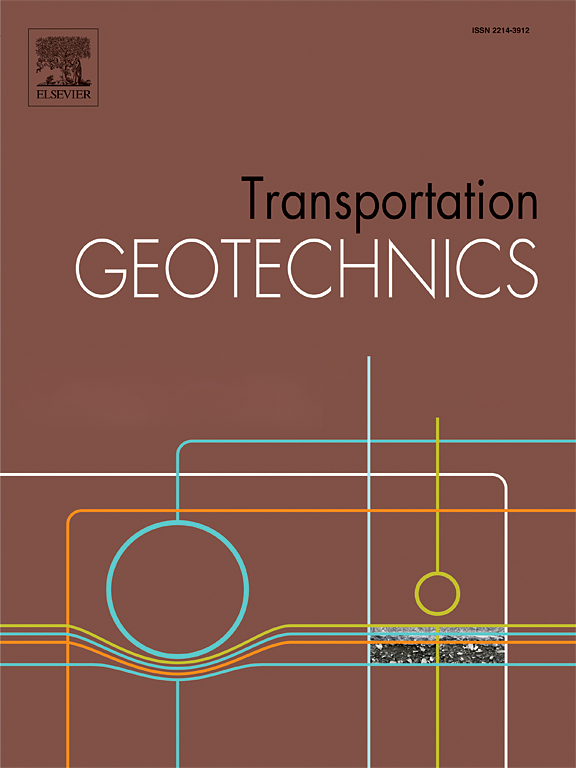Experimental study on the interaction mechanisms of soil overlying embedded foundations under reverse faults
IF 4.9
2区 工程技术
Q1 ENGINEERING, CIVIL
引用次数: 0
Abstract
The continuous expansion of transportation networks has led to an increasing number of extra-long and large-scale transportation infrastructures being constructed adjacent to, crossing, or traversing active faults. In high-speed transportation infrastructure where foundations with embedded depths are commonly employed, the interaction between embedded foundations and fault rupture emerges as a critical issue in transportation geotechnics. This study systematically investigated reverse faulting effects through 26 experimental configurations combining foundation positions, embedded depths, and structural loads. Three foundation-rupture interaction modes were identified, and their transitional relationships were defined based on ground surface and foundation displacement characteristics. The proposed damage-based classification approach enhanced traditional methodologies through two key advancements: First, it incorporated structural loading — a factor persistently neglected in prior studies; Second, it utilized observable ground surface and foundation displacements to develop mitigation strategies adaptable to unpredictable subsurface rupture propagations.
逆断层条件下埋置基础上覆土相互作用机理试验研究
交通网络的不断扩张导致越来越多的超长大型交通基础设施在活动断层附近、穿越或穿越而建。在高速交通基础设施中,通常采用埋深基础,埋深基础与断层破裂的相互作用成为交通岩土工程中的一个关键问题。本研究通过结合地基位置、埋深和结构荷载的26种试验配置,系统地考察了逆断层效应。确定了三种基础-破裂相互作用模式,并根据地表和基础位移特征确定了它们之间的过渡关系。提出的基于损伤的分类方法通过两个关键的进步增强了传统的方法:首先,它纳入了结构载荷-一个在以前的研究中一直被忽视的因素;其次,它利用可观测的地表和基础位移来制定适应不可预测的地下破裂传播的缓解策略。
本文章由计算机程序翻译,如有差异,请以英文原文为准。
求助全文
约1分钟内获得全文
求助全文
来源期刊

Transportation Geotechnics
Social Sciences-Transportation
CiteScore
8.10
自引率
11.30%
发文量
194
审稿时长
51 days
期刊介绍:
Transportation Geotechnics is a journal dedicated to publishing high-quality, theoretical, and applied papers that cover all facets of geotechnics for transportation infrastructure such as roads, highways, railways, underground railways, airfields, and waterways. The journal places a special emphasis on case studies that present original work relevant to the sustainable construction of transportation infrastructure. The scope of topics it addresses includes the geotechnical properties of geomaterials for sustainable and rational design and construction, the behavior of compacted and stabilized geomaterials, the use of geosynthetics and reinforcement in constructed layers and interlayers, ground improvement and slope stability for transportation infrastructures, compaction technology and management, maintenance technology, the impact of climate, embankments for highways and high-speed trains, transition zones, dredging, underwater geotechnics for infrastructure purposes, and the modeling of multi-layered structures and supporting ground under dynamic and repeated loads.
 求助内容:
求助内容: 应助结果提醒方式:
应助结果提醒方式:


